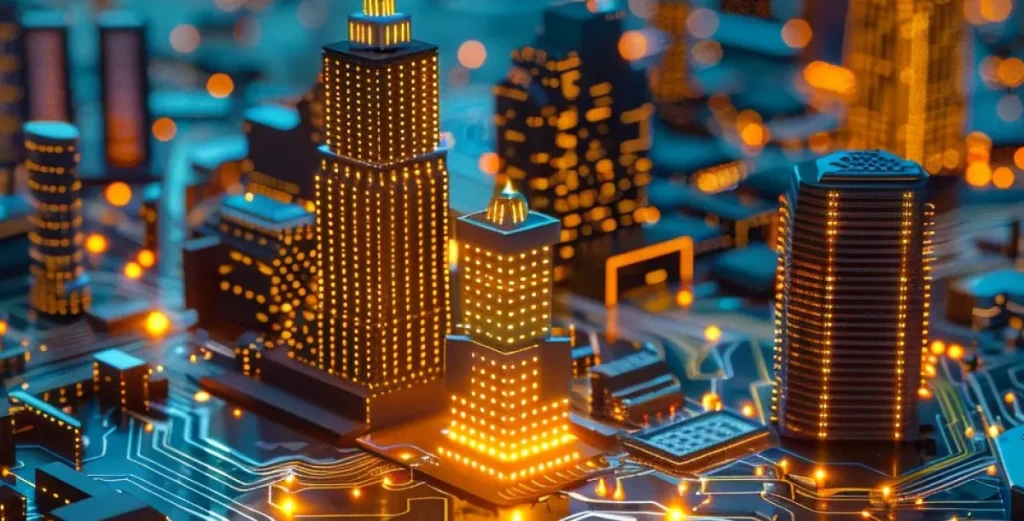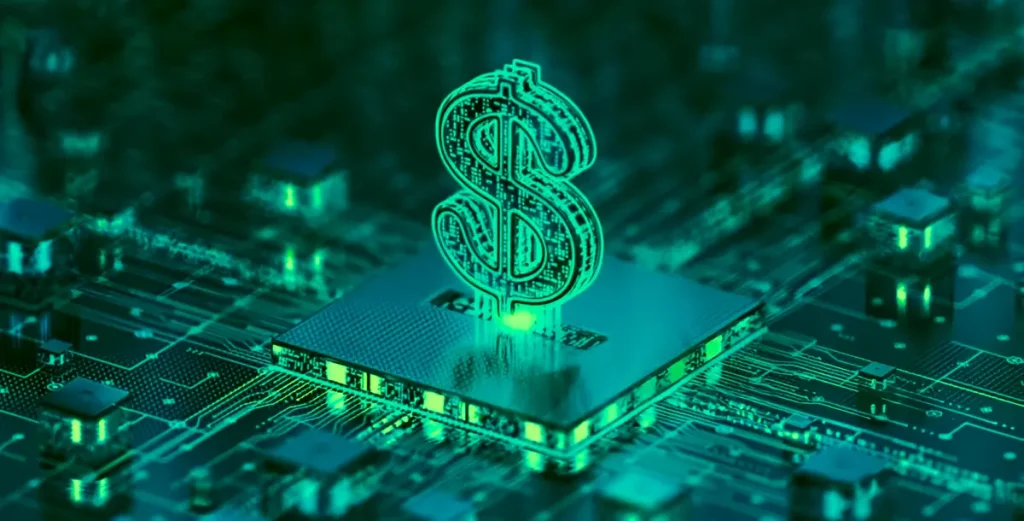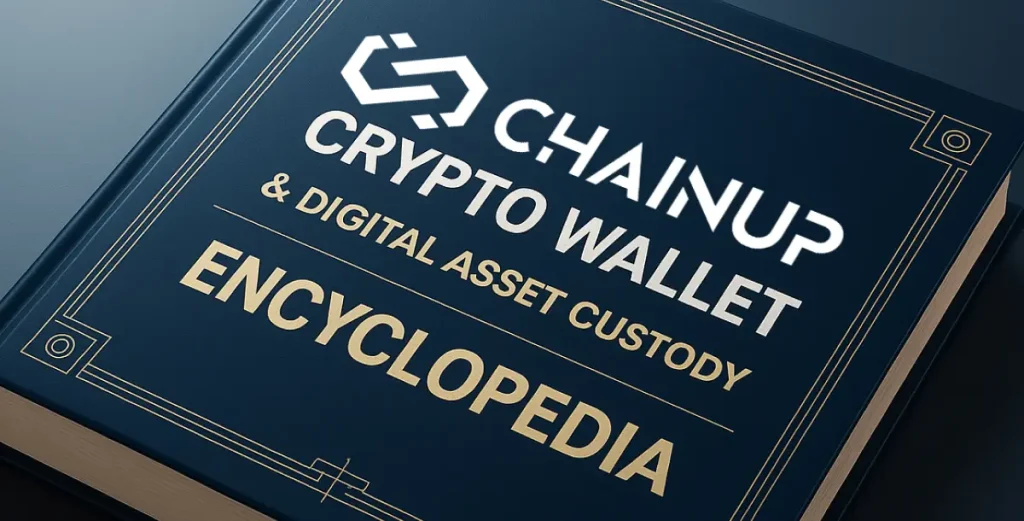Asset Tokenization — also known as Tokenized Real-World Assets (RWA) — has become one of the most talked-about innovations in the blockchain and digital finance ecosystem.
It represents a bridge between traditional finance and digital innovation, enabling physical or financial assets—such as real estate, art, commodities, or bonds—to be represented as digital tokens on the blockchain.
Whether you’re a newcomer exploring the basics or an industry professional deepening your knowledge, this RWA Encyclopedia compiles everything you need to know about how real-world assets are being transformed into digital tokens and how this evolution is reshaping the future of finance and ownership.
Understanding the Concept of Asset Tokenization
Asset Tokenization is the process of converting ownership rights of a real-world asset—such as real estate, gold, art, or even company shares—into digital tokens that exist on a blockchain. Each token represents a specific portion or value of the asset, allowing it to be easily traded, transferred, or owned in smaller fractions.
For example, imagine a building worth $1 million being tokenized into 1 million digital tokens, each representing $1 of ownership. Instead of needing huge capital to buy the whole property, investors can purchase small fractions through tokens—making high-value assets more accessible and liquid.
In simpler terms, tokenization allows us to take something tangible from the physical world and represent it digitally, so it can be bought, sold, or invested in just like cryptocurrencies, but with real assets behind it.
Asset Tokenization vs. Real-World Asset (RWA) Tokenization: Are they different?
The terms are often used interchangeably, but there’s a subtle distinction. Asset tokenization is a broad concept—it refers to turning any asset (digital or physical) into blockchain-based tokens. RWA tokenization is a subset of that concept, focusing specifically on real-world, tangible, or traditional financial assets (like real estate, bonds, or commodities) being represented on-chain.
4 main Benefits of Asset Tokenization
Proponents of asset tokenization emphasize its transformative potential for both investors and asset owners. By merging blockchain technology with traditional finance, tokenization unlocks new levels of accessibility, efficiency, and transparency.
1. Increased Liquidity
Traditionally, assets like real estate, fine art, or private equity are difficult to sell quickly. Through tokenization, these assets can be divided into smaller, tradable units and listed on regulated digital marketplaces. This type of fractional trading creates liquidity for markets that were previously highly illiquid.
2. Fractional Ownership
Tokenization allows investors to own fractions of high-value assets without purchasing them in full. For instance, instead of buying an entire building or artwork, investors can acquire smaller portions through digital tokens, significantly lowering the barrier to entry.
3. Operational Efficiency
Blockchain-based processes automate settlement, recordkeeping, and compliance, reducing reliance on intermediaries such as banks, brokers, or clearinghouses. According to the World Economic Forum, tokenization can enhance efficiency, reduce transaction costs, and broaden market access by enabling 24/7 trading and near-instant settlement.
4. Transparency and Security
Each transaction is recorded on an immutable blockchain ledger, providing verifiable proof of ownership and transaction history. This enhances trust and reduces the risk of fraud or manipulation—though it also raises new considerations about data privacy and how much information should be made public.
Challenges and Risks of Asset Tokenization
While asset tokenization offers many benefits, it also faces several challenges and risks that must be addressed before the market can mature. These include regulatory uncertainty, technical limitations, and practical concerns about asset management and investor protection.
Regulatory and Legal Uncertainty
One of the biggest hurdles lies in navigating different jurisdictions’ laws and compliance frameworks. Tokenized assets may fall under securities regulations, requiring proper licensing, disclosures, and investor protections. The absence of globally consistent regulations often leads to confusion, compliance risks, and potential legal disputes.
Custody and Ownership Enforcement
Although tokens represent ownership digitally, real-world legal recognition can still be complex. Enforcing ownership rights in court or transferring custody of physical assets may require additional legal mechanisms. Without clear legal links between tokens and underlying assets, investors face potential ownership and redemption risks.
Technical and Security Risks
Tokenization depends on blockchain infrastructure, smart contracts, and custodial systems—all of which can be exposed to hacks, coding errors, or operational failures. If a smart contract contains vulnerabilities or a wallet is compromised, investors could lose access to their tokens or funds.
Valuation and Liquidity Concerns
While tokenization promises liquidity, this is not guaranteed. Without a sufficient number of buyers and sellers, markets for tokenized assets may remain illiquid. Additionally, determining the true market value of tokenized assets can be difficult if there is limited price discovery or transparency.
Data Privacy and Transparency Balance
Blockchain’s transparency can sometimes conflict with privacy requirements. Sensitive ownership data being permanently visible on-chain can raise privacy and confidentiality concerns, especially for high-value or institutional investors.
How asset tokenization works: step-by-step
How is a real-world asset turned into tradable digital tokens on a blockchain?
1. Asset selection & valuation
The owner chooses an asset to tokenize (e.g., property, artwork, or bond). Independent appraisal and legal checks determine the asset’s fair market value and verify a clear title.
2. Legal structuring & compliance
A legal wrapper is created (special purpose vehicle, trust, or contractual arrangement) that links token ownership to rights in the underlying asset. Regulatory requirements (securities law, KYC/AML, investor eligibility) are mapped out and built into the offer.
3. Design token economics (tokenomics)
Decide total supply, divisibility (how small a fraction a token can represent), rights attached to tokens (voting, dividends, revenue share), and any transfer restrictions.
4. Create smart contract & choose token standard
A smart contract is developed and deployed on a chosen blockchain. It enforces token behavior – issuance, transfers, freezes, and sometimes automated payouts. Common standards (e.g., ERC-20, ERC-721, ERC-1400) are selected based on the use case.
5. Off-chain custody & asset safeguarding
If the asset is physical, a custodian or trustee physically holds and secures it; for financial assets, appropriate custodial arrangements are made. Custody arrangements and audit trails are documented to maintain trust.
6. Regulatory approvals & disclosures
Necessary filings, prospectuses, or investor disclosures are prepared and (if required) submitted to regulators. Legal opinions and compliance checks are often obtained.
7. Issuance & token distribution
Tokens are minted by the smart contract and distributed to investors according to the sale plan (private round, public offering, or marketplace listing). Payment can be in fiat, stablecoins, or crypto depending on setup.
8. Recording ownership on-chain
Token balances on the blockchain serve as the authoritative ledger of who owns what fraction of the asset. Off-chain registries or legal records may mirror on-chain ownership where required by law.
9. Secondary trading & liquidity
Tokens can be traded on secondary markets — centralized exchanges, decentralized exchanges (DEXs), or specialized security token trading platforms — subject to any regulatory or contract restrictions.
10. Ongoing management & reporting
The issuer or asset manager handles operations: distributions (rents, interest, dividends), maintenance (for physical assets), compliance updates, audits, and transparent reporting to token holders.
11. Redemption or exit
At maturity or exit (sale of the underlying asset or buyback), proceeds are distributed to token holders according to the agreed rules. Smart contracts can automate payouts; legal processes finalize the transfer of underlying asset ownership if needed.
Quick Checklist: Asset Tokenization Process
Short example recap (property from earlier): appraisal → legal wrapper (SPV) created → decide 1,000,000 tokens → smart contract deployed → custodian holds the building → tokens minted and sold → tokens trade on a platform → rent income is distributed to token holders → building is later sold and proceeds paid out.
Identify and value the real-world asset
Create legal and regulatory structure (SPV or trust)
Define tokenomics — supply, rights, and ownership model
Develop smart contracts and select blockchain network
Secure off-chain custody and documentation
Obtain compliance and regulatory approval
Mint and distribute tokens to investors
Record ownership and manage on-chain transactions
Enable secondary trading for liquidity
Maintain reporting, compliance, and payout systems
Conclude with redemption or asset sale event
Real-World Examples of Asset Tokenization
Asset tokenization is no longer just a theoretical concept — it’s already being applied across multiple industries, bridging traditional assets with blockchain innovation. Below are some notable real-world examples that illustrate how tokenization is transforming different sectors:
1. Real Estate Tokenization
Real estate is one of the most active areas for tokenization. Developers and investment firms tokenize properties, allowing investors to purchase fractions of high-value assets like residential buildings, hotels, or commercial offices. For example, platforms such as RealT and Property have enabled investors to buy fractional shares of U.S. rental properties, earning rental income through blockchain-based tokens.
2. Art and Collectibles
Fine art, luxury goods, and collectibles are also being tokenized to democratize access to exclusive investments. Projects like Masterworks allow investors to purchase shares of iconic artworks by tokenizing them on the blockchain, while NFTs have made it possible to represent unique digital or physical collectibles securely.
3. Commodities and Precious Metals
Gold, silver, and other commodities are increasingly being tokenized to facilitate easy and secure trading. Each token typically represents ownership of a specific quantity of the underlying asset held in custody. Examples include Pax Gold (PAXG) and Tether Gold (XAUT), where each token corresponds to one troy ounce of gold stored in professional vaults.
4. Private Equity and Venture Capital
Private equity firms are exploring tokenization to increase liquidity for traditionally locked-up investments. By tokenizing fund shares or equity stakes, investors can trade them more freely, improving capital efficiency. For instance, Securitize and Tokeny have developed compliant platforms to tokenize shares of private companies.
5. Government and Institutional Bonds
Several governments and major financial institutions have piloted tokenized bond issuances to test blockchain’s efficiency in capital markets. The Monetary Authority of Singapore (MAS) and the European Investment Bank (EIB), for example, have both issued blockchain-based digital bonds, marking significant steps toward institutional adoption of tokenized financial instruments.
Use Cases of RWA Tokenization
1. Issuance
Financial institutions are now issuing digital-native bonds and equities directly on blockchain platforms. This approach reduces underwriting and administrative costs, enhances transparency, and significantly shortens the time-to-market compared with traditional issuance processes.
2. Securities Financing
Tokenized assets are transforming the collateral and lending markets. Through tokenized collateral, participants can perform real-time margining, automated settlement, and more efficient risk management across multiple trading venues — improving liquidity and capital utilization.
3. Asset Management
Investment funds and asset managers are exploring tokenized fund shares, enabling investors to buy, sell, or transfer their holdings with greater flexibility and lower operational friction. Tokenization also improves transparency by allowing investors to track ownership and performance directly on the blockchain.
As these pilots continue to mature and digital infrastructure evolves, the long-term vision is for full interoperability and composability — where tokenized assets can move seamlessly across different platforms, protocols, and financial applications, forming a more connected and efficient global market.
Common Platforms and Token Standards
Asset tokenization can be implemented on various blockchain networks such as Ethereum, Polygon, BNB Chain, Avalanche, and Solana, each offering different levels of scalability, transaction cost, and compliance integration.
Most tokenized assets follow standardized token formats to ensure interoperability and compliance. The most common ones include:
ERC-20 – For fungible tokens (used for fractional ownership or fund shares)
ERC-721 – For non-fungible tokens (used for unique assets like art or real estate titles)
ERC-1155 – A hybrid standard allowing both fungible and non-fungible tokens
ERC-1400 / ERC-3643 – Designed specifically for security tokens, with built-in compliance and permission controls
These standards help ensure that tokenized assets can be easily managed, traded, and integrated across regulated blockchain ecosystems.
Historical Development of Asset Tokenization
The concept of asset tokenization emerged around 2017, alongside the rise of blockchain-based securities and the broader shift toward digitizing traditional assets. Early experiments focused on tokenized real estate and security tokens, paving the way for today’s institutional-grade platforms. As blockchain infrastructure and regulations matured, tokenization evolved from a niche innovation into a key pillar of the digital asset economy.
Real-World Asset Tokenization FAQ(s):
What is a real-world asset (RWA) tokenization?
Real‑world asset tokenization is the process of converting ownership rights in physical or traditional financial assets, such as real estate, commodities, bonds, or even invoices, into blockchain-based digital tokens. These tokens represent fractional claims or economic rights tied to the underlying asset, enabling them to function on-chain as tradable, programmable instruments.
In other words, asset tokenization bridges the gap between traditional finance (TradFi) and decentralized finance (DeFi). It lets you bring tangible value into blockchain systems while preserving legal enforceability and auditability.
Common examples of RWAs include tokenized government securities (like U.S. Treasury bills), real estate properties, private credit instruments, and corporate invoices.
What is a blockchain? and its role in RWA tokenization:
A blockchain is a decentralized digital ledger that securely records transactions across a network of computers. In RWA tokenization, it serves as the foundation for issuing, storing, and transferring digital tokens that represent real-world assets. Blockchain ensures transparency, immutability, and trust, enabling seamless ownership tracking and reducing reliance on intermediaries.
What are tokens?
Tokens are digital representations of value or rights that exist on a blockchain. They can signify ownership, access, or claims to tangible or intangible assets, such as real estate, art, or financial instruments. These tokens can be traded, transferred, or used across digital platforms, enabling more efficient and transparent asset management.
What is token minting?
Token minting is the process of creating new digital tokens on a blockchain through a smart contract. Each minted token represents a specific value, right, or portion of an underlying asset in the case of RWA tokenization. It marks the moment when a real-world asset is officially digitized and made available for trading or investment on the blockchain..
Smart contract roles in asset tokenization
Smart contracts are self-executing programs on the blockchain that automatically enforce the rules of an asset tokenization process. They manage key functions such as token issuance, transfers, compliance checks, and profit distributions without intermediaries. This automation ensures security, transparency, and efficiency throughout the lifecycle of tokenized real-world assets.
What is fractional ownership?
Fractional ownership means dividing an asset into smaller, tradable units so multiple investors can each own a portion of it. Through tokenization, these ownership fractions are represented by digital tokens on a blockchain. This approach makes high-value assets more accessible, allowing investors to participate with smaller capital amounts.
What are ERC-20, ERC-721, ERC-1155, and ERC-1400?
These are Ethereum token standards that define how tokens behave on the blockchain.
ERC-20: For fungible tokens, where each unit is identical (e.g., utility or payment tokens).
ERC-721: For non-fungible tokens (NFTs), representing unique assets like art or real estate titles.
ERC-1155: A hybrid standard that supports both fungible and non-fungible tokens in one contract.
ERC-1400: Designed for security tokens, with built-in compliance and permission controls for regulated assets.
Fungible token vs. non-fungible token: What are the differences?
Fungible tokens are interchangeable and identical in value—each unit is the same as another (like currencies or ERC-20 tokens). In contrast, non-fungible tokens (NFTs) are unique and indivisible, representing one-of-a-kind assets such as artwork, property, or collectibles. In short, fungible tokens are used for uniform value exchange, while NFTs represent distinct ownership or identity.
What is token economics, or tokenomics?
Token economics (or tokenomics) refers to the design and structure of a token’s economic system—how it is created, distributed, used, and managed within a blockchain ecosystem. It defines factors such as total supply, utility, rewards, governance rights, and incentives for participants. In RWA tokenization, strong tokenomics ensures fair value distribution, liquidity, and long-term sustainability of the tokenized asset.
What is off-chain custody?
Off-chain custody refers to the secure storage and management of real-world or physical assets that back tokenized assets, outside the blockchain. These assets are typically held by licensed custodians or trustees to ensure legal ownership and asset protection. It provides a trusted bridge between the physical world and the blockchain, ensuring that each token truly represents a real underlying asset.
Off-chain custody vs. on-chain custody: What’s the difference?
Off-chain custody involves storing and managing physical or traditional assets (like real estate, gold, or documents) outside the blockchain, usually by regulated custodians to ensure legal compliance and asset security.
On-chain custody, on the other hand, refers to holding and managing digital assets directly on the blockchain, where ownership and transfers are controlled through private keys and smart contracts.
In short, off-chain custody secures real-world assets, while on-chain custody manages digital or tokenized assets natively within the blockchain ecosystem.
What is a blockchain oracle?
A blockchain oracle is a service that connects blockchains with real-world data, enabling smart contracts to access information outside the network. In RWA tokenization, oracles provide verified data such as asset prices, ownership records, or market events to ensure accurate token valuation and contract execution. They act as a bridge between on-chain systems and off-chain realities, maintaining trust and reliability.




